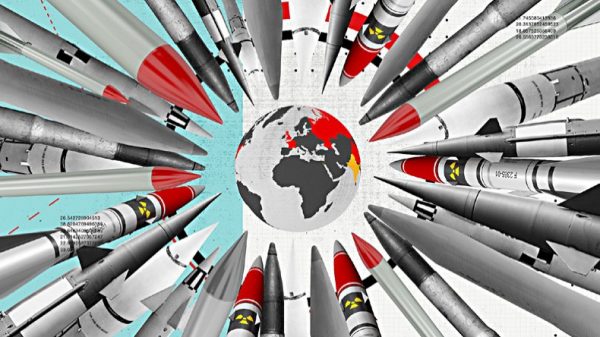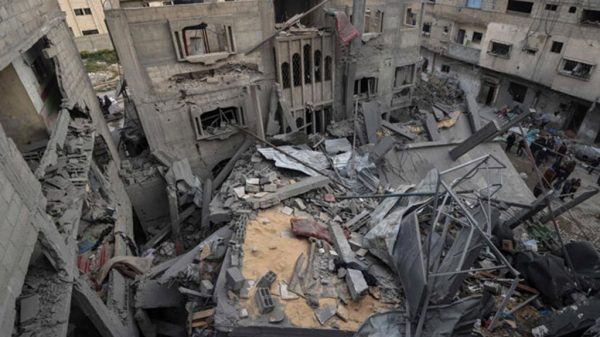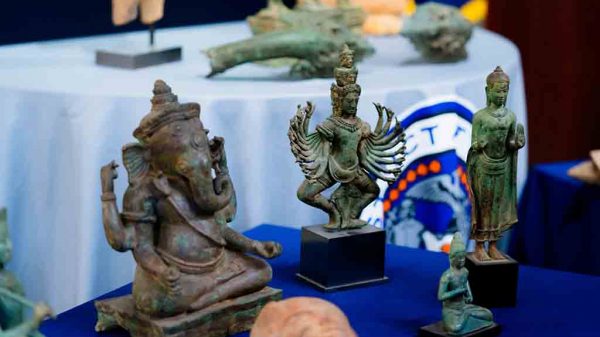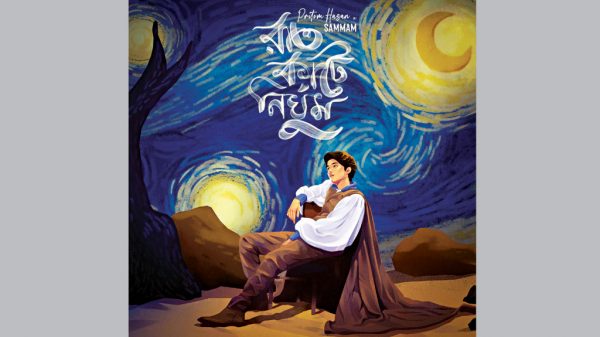Physicists together to rein in nuclear threat

Carol Polsgrove:
AS THE Bulletin of the Atomic Scientists’ Doomsday Clock has ticked closer to midnight, a new organisation has taken shape to sound the alarm: the Physicists Coalition for Nuclear Threat Reduction.
More than 1,000 scientists signed onto a January 17 Coalition statement condemning Russian president Vladimir Putin’s threat to use nuclear weapons in the Ukraine war. The statement laid out the devastating consequences if Putin were to carry out his threat:
‘The use of a nuclear weapon for the first time in more than 77 years would risk global catastrophe. If Russia were to use any nuclear weapons in its war on Ukraine, the risk of nuclear escalation would be extremely serious. Once nuclear weapons are used in a conflict, particularly between nuclear-armed adversaries, there is a risk that it could lead to an all-out nuclear conflagration….
‘Today, it is widely understood that there can be no adequate humanitarian response following the use of nuclear weapons. Nuclear weapons kill and injure people immediately and indiscriminately, destroy cities, and contaminate the soil, water, and atmosphere with radioactivity. The smoke from burning cities in a nuclear war could darken and cool Earth’s surface for years, devastating global food production and ecosystems and causing worldwide starvation. For these reasons, 145 nations at the Nuclear Non-proliferation Treaty Review Conference on August 22, 2022, endorsed the demand that “nuclear weapons are never used again, under any circumstances”.’
And yet, the statement goes on, ‘all nine nuclear-armed states are investing in sustaining and modernising their nuclear arsenals and have plans to use them to wage nuclear war if they choose.’
I had barely started college in 1962 when the Cuban Missile Crisis set off alarms. The shadow of nuclear war has hovered ever since. Movements to banish it have come and gone. Now, following in the steps of other scientists who have tried to put the nuclear genie back in the bottle, the Physicists Coalition is pressing governments and civil society to — as their website asks in bold white on black letters — ‘Help Us Shrink the Global Risk from Nuclear Weapons.’
How did this new venture take shape?
I reached out to Frank N von Hippel, a founding member and now on the Coalition’s steering committee, for an account of how the Coalition began, and in an email he replied:
‘In April 2018, two colleagues and I, representing three generations of physicists who have been involved in nuclear arms control, published in Physics Today an article, “Nuclear weapons dangers and policy options”, calling on our fellow physicists to become engaged again in educating Congress about the dangers from nuclear weapons and that there are opportunities to reduce those dangers.
‘There was very little response but one of my Princeton colleagues, Stewart Prager, came to me and asked, “why don’t we do something about it?” We brainstormed with Zia Mian, my successor as co-chair of Princeton’s Program on Science and Global Security, and wrote the funding proposal to the American Physical Society.’
Their proposal was funded, Prager became chairman of the Physicists Coalition and Mian and von Hippel, along with four others, joined him as the initial members of the coalition steering committee.
Since then, they have organised colloquia at about 130 universities across the country — presenting the urgency of reining nuclear weapons in. They have recruited about 900 members to the cause — not only physicists but other physical scientists and engineers as well.
The coalition is now, von Hippel said, ‘ramping up our efforts to educate Congress and to encourage the formation of counterpart organisations in other nuclear-armed states and in the approximately 30 non-nuclear-armed countries in NATO plus Australia, Japan and South Korea under the US nuclear “umbrella”.’
I asked steering committee member Laura Grego (research director of the Global Security Programme at the Union of Concerned Scientists) to describe those who attend university colloquia and their level of concern. Usually, she said, those who attend are physicists: students, postdocs, and faculty — several generations of scientists.
‘I have given about a dozen of these talks’, she said, and ‘in every one we have had a thoughtful and engaged discussion afterwards. Older scientists who have lived through the Cold War have shared their perspectives gained during that era and sometimes their experiences as activists, when it was more common among physicists. And a good number of earlier career scientists have had really insightful questions and comments. I have almost always come away having felt there were at least a few people who might make working on these issues a personal or professional priority. I frame my talk really deliberately, explaining that I want them to get involved in these very urgent issues and intend to use the talk to persuade them to! I’m very direct about that.’
Although the Physicists Coalition has so far focused on recruiting American members who will interact with their Congressional delegations, it is now (as Stewart Prager explained to me in an email) ‘beginning special efforts to reach out to our international colleagues. We are interested in initiating dialogue, or spawning efforts analogous to the Coalition in other nations, or in expanding the scope of the Coalition more deliberately beyond the US.’
The stakes are high. Speaking at the University of Wisconsin-Madison on December 3, 2021, Prager showed how many would die at various distances from the blast. An explosion in New York City would leave one million dead, one million injured. And then there would be indirect effects: fallout but also famine, as widespread smoke disrupts climate. Infrastructure would be destroyed. Financial and political systems would fail.
‘The nuclear arms threat is as extreme as it ever has been’, he said. ‘A couple of guys can decide to kill everyone in the world by pushing a couple of buttons.’
Members of the Physicists Coalition have every reason to understand the nuclear peril. Among them are faculty members at Princeton University’s Programme on Science and Global Security who also serve on the International Panel on Fissile Materials — von Hippel, Mian, and Alexander Glaser — who, along with Harold A Feiveson, wrote Unmaking the Bomb: A Fissile Material Approach to Nuclear Disarmament and Nonproliferation.
Glaser and Mian, along with Tatsujiro Suzuki of Nagasaki University, co-chaired the panel that produced the massive Global Fissile Material Report 2022: Fifty Years of the Nuclear Non-Proliferation Treaty: Nuclear Weapons, Fissile Materials, and Nuclear Energy.
They are, in short, heavy hitters on the nuclear weapons scene, and they are joined by many more, physicists and non-physicists, who have signed on to the coalition’s mission, declared on its homepage:
‘We, the physics community, helped create these weapons seventy-five years ago and quickly became a voice for caution and restraint in their use. Today, this history positions us uniquely to return the nation’s gaze to the immense threat of nuclear weapons, and to provide a guide for how we can remedy it. Recent actions by nations that possess nuclear weapons have heightened our risk of nuclear catastrophe. The withdrawal from arms control treaties, new threats to nuclear weapons by cyber-attack, the increasingly complex web of relations and hostilities between nuclear weapons states, and the massive modernisation of nuclear forces in the US and Russia, as well as China, are igniting a deadly new arms race. Together we can reverse this trend.’
Their goal is to ‘be a powerful voice to inform Congress and other key stakeholders in policy making, including the public.’ Steering members have given expert testimony before congressional committees, and the Coalition plans to push for negotiations with Russia for a successor to the nuclear arms control framework provided by the New START treaty, which expires in early 2026.
In October 2022, the Coalition extended its reach by forming a partnership with an older powerful player — the Arms Control Association, and, together, the partners offer a Next Generation Fellowship to enlist younger scientists in the cause.
Meanwhile, those of us who are not scientists can watch the Coalition’s past presentations — for example, the November 14, 2022 session on the Treaty on the Non-Proliferation of Nuclear Weapons and the Treaty on the Prohibition of Nuclear Weapons, in which panelists discussed international efforts to build safeguards through the treaty system like those that govern the use of other weapons of mass destruction.
We can even join the Coalition for access to the webinars on zoom — the next webinar, March 21 at Illinois State University, will present ‘A Case Study in Nuclear Proliferation: The Iran Nuclear Deal and the Responsibility of Physicist.’
And we can spread the word of their work in the communities which we are a part.
CounterPunch.org, February 17.























Leave a Reply